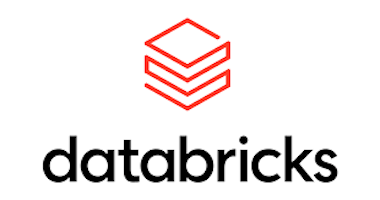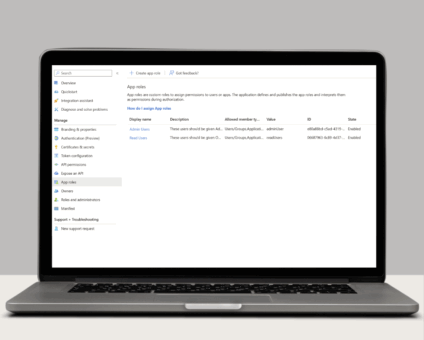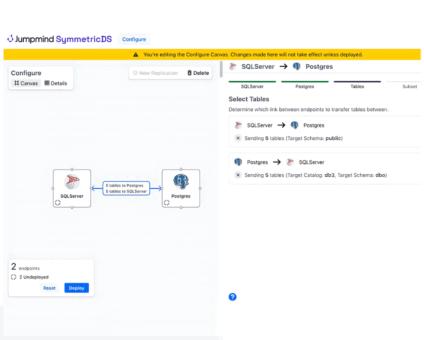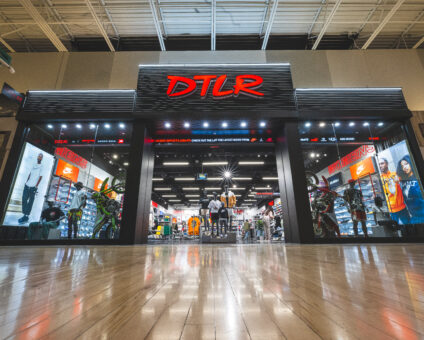COLUMBUS, Ohio – November 5, 2025 – 54% of North American retailers surveyed say they …
![]()
Cloud-native POS platform for seamless omnichannel customer experience.
![]()
A single hub for all promotions campaigns.
- Omnichannel ExperienceCreate seamless customer experiences
- Device IndependencePOS agnostic to form factor or operating system
- Self-CheckoutDo more with fewer associates
- Mobile StoreLeverage POS from anywhere
- POS on the GoEnable associates to sell outside of the store
- Unified PromotionsStreamline and simplify promotion workflows
- CX ConnectAllow customers to engage with POS during checkout
- Composable CommerceCreate the store experience you want
![]()
The most advanced synchronization solution for databases and file systems.
![]()
Data configuration and batch automation across different disparate systems and vendors.
-
Data Replication
- Multi-tier DistributionReplicate thousands of remote locations
- Cloud Database ReplicationCapture live changes from on-premise to the cloud
- High Availability and Load BalancingEnsure 24/7 access to data and scale efficiently with demand
- Analytics and ReportingCapture the whole picture with real-time reporting
- Multi-masterMaintain consistency of data in a peer to peer setup
- Data WarehouseReplicate live and historical data to a warehouse
- MigrationsConduct live data migration with no downtime
-
-
Data Integration
- Master Data ManagementChanges propagate across the entire system, allowing you to maintain a centralized view of all parts of your core business entities.
- Application IntegrationReduce dependencies, complexity, and risk to build a high-performance, data-driven application.
- Web ServicesIntegrate multiple systems using web services or build a business application using a service-oriented architecture.
- Data WarehouseIntegrate disparate data from multiple systems so you can transform data for better business intelligence and reporting.
- Data MigrationConduct live data migration during critical server replacements, storage upgrades, and data center relocations—with no downtime.
- ImplementationIntegration consultants help design, develop, and deploy an implementation of our products.
- DevelopmentThe product developers can add features, enhance existing functionality or build support for new platforms.
- TrainingEngage our experienced training resources to gain in-house knowledge and expertise on Jumpmind products.
- SupportLeverage product engineers to resolve issues, fix defects and provide updates or patches.
- Proof of ConceptDetermine the feasibility of implementing our products and get answers to your questions quickly.
36% of retailers say meeting the demands of hyper-informed customers is one of the top …
Physical retail is still where the magic happens. According to new research by RSR, 85% …
View all Blog Posts
Overview Organizations today face the challenge of consolidating data from on-premise and cloud-based systems into …
Single Sign-On with OAuth 2.0/OpenID Connect One of the many new features included in version …
The new release of SymmetricDS Pro 3.16 data replication software simplifies setup, improves performance, and …
View all Blog Posts
Jumpmind Powers Point of Sale and Promotions Execution for Landmark Retail, One of the Largest …
Retail Technology Leader Jumpmind to Enable Mobile Point of Sale and Inventory Management for DTLR/VILLA …
The retailer is charting its next chapter with retail technology modernization to power inspired omnichannel …
View all Customer Stories
Jumpmind Appoints Technology Veteran Mike Webster to Board of Directors Jumpmind recently welcomed Mike Webster …
The partnership will drive innovation, expand global reach, and reinforce Jumpmind’s position as a leader …
After nearly a century in business, the legendary Canadian fashion retailer is retooling to streamline …
View all Blog Posts
![]()
Cloud-native POS platform for seamless omnichannel customer experience.
![]()
A single hub for all promotions campaigns.
![]()
The most advanced synchronization solution for databases and file systems.
![]()
Data configuration and batch automation across different disparate systems and vendors.
-
Data Replication
-
-
Data Integration
-
Retail Retail trends, technology, and enhancing the customer experience
-
Data Thoughts on data matters, dialects, performance, and security
-
Customer Stories How Jumpmind impacts the businesses of our clients
-
Videos & Webinars Watch on demand demos, reviews, and tours of our products
-
Company News Get the scoop on Jumpmind's growth and impact
View all Blog Posts
What’s New in SymmetricDS 3.11
The new release of SymmetricDS Pro 3.11 will help you:
- Replicate changes from Oracle using logs or triggers
- Enhance routing performance
- Deploy to SAP HANA database with data loads and changes
- Setup nodes for load and extract only with no runtime footprint
- Troubleshoot network problems between nodes
Log-based Replication for Oracle
Flexible database replication lets you choose between log-based or trigger-based change data capture for Oracle databases. Log-based data replication is now an option when requirements include minimal overhead in the database and high throughput of data replication. The node wizard sets up log replication and guides you through database permissions needed for log mining. The same powerful configurations are available for either option, including selecting tables, columns, data subsets, conflict management, and data transformation.
Routing Enhancements
Routing performance is improved with enhanced sub-setting of data and background processing of initial loads. Common batches are now used exclusively to package and send change data for multiple nodes, which reduces the number of data events generated. Previously, a change being routed to 1000 nodes might generate 1000 batches and 1000 data events — now, only 1 data event is generated for a common batch. Any subset of nodes returned from a router can receive a common batch. Initial loads are now processed from a separate job in the background, which leaves the routing job available to process change data.
SAP HANA Support
Replicate data to and from SAP HANA database, a business data platform for on-premise or cloud that processes transactions and analytics at the same time. Use initial loads, partial loads, and change data capture with HANA to integrate data across different database platforms. Securely replicate data across hybrid and multi-cloud environments to leverage fast data processing, OLAP, and OLTP with a consolidated data platform. Leverage a rich feature set, including guaranteed data delivery, filtered synchronization, data transformation, and offline mode.
Load Only, Extract Only
When change data capture from your database isn’t supported or it’s not needed, you can use the load-only or extract-only options during node setup. Instead of using your database to store runtime information, an internal database is used to keep track of state, progress, and statistics, so the web console retains all its usual functionality for monitoring and troubleshooting. The load wizard lets you send or receive full or partial data loads with other nodes. Use custom jobs to schedule full data loads or use filtering criteria to extract changes by date range.
Network Diagnostics
The nodes panel can now test the network connection between two nodes to help troubleshoot networking and deployment problems. It uses the same transport configured between the nodes, either a push or pull, to establish a connection for diagnostics. The connection is tested for valid hostname, URL, port number, TLS certificate, HTTP options, and bandwidth.














